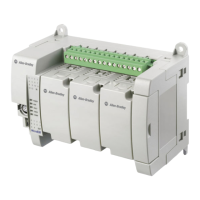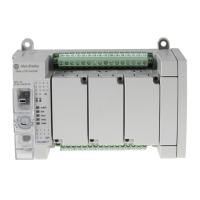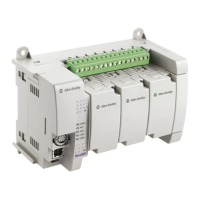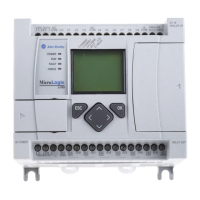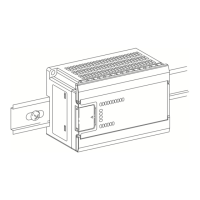Rockwell Automation Publication 2080-UM005B-EN-E - March 2015 89
Using microSD Cards Chapter 9
Datalog
The datalogging feature allows you to capture global and local variables with
timestamp from the Micro800 controller into the microSD card. You can retrieve
the recorded datasets on the microSD card by reading the contents of the
microSD card through a card reader or by doing an upload through the
Connected Components Workbench software.
A maximum number of 10 datasets is supported for a Micro820 program. Each
dataset can contain up to 128 variables, with a maximum of four (4) data string
variables per dataset. String variables can have a maximum of 252 characters. All
datasets are written to the same file. For more information on how datalogs are
stored on the microSD card, see the Datalog Directory Structure
on page 90.
Micro820 controllers typically support 10 MB of datalog per day.
You can retrieve datalog files from the microSD card using a card reader or by
uploading the datalogs through Connected Components Workbench.
See the sample quickstart project to get you started on the Datalog feature, Use
the Datalog Feature on page 99.
Uploading datalog files in PROGRAM mode is recommended for optimum
performance and to prevent file access conflict. For example, if the
datalog instruction is executing, Connected Components Workbench will
not upload the last datalog file.
Datalog execution time depends on the user application and its
complexity. Users are advised to datalog once a minute for typical
applications. Note that housekeeping takes at least 5 ms per program
scan. See Program Execution in Micro800 on page 61
for more
information on program scan and execution rules and sequence.
See also Datalog – Data Payload vs. Performance Time
on page 120.
Note that in cases where there are simultaneous RCP and DLG function
block execution or uploads/downloads/searches, the activities are
queued up and handled one by one by the program scan. Users will
notice a slowdown in performance in these cases.
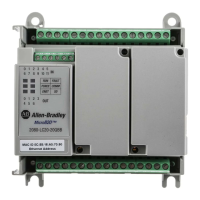
